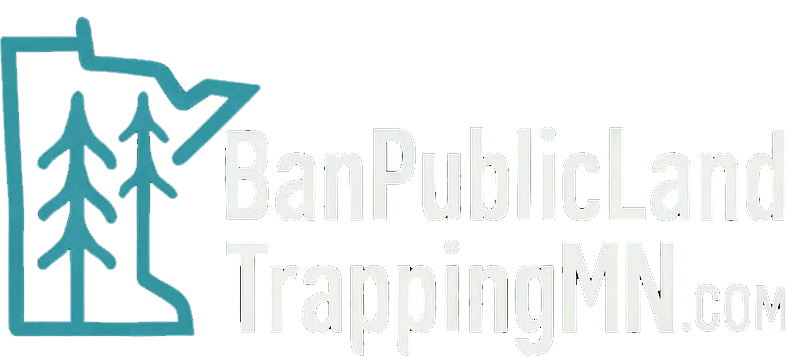Why We’re Passionate About Ending Trapping on Public Lands in Minnesota
At BanPublicLandTrappingMN.com, our mission is simple: to protect Minnesota’s public lands for people, pets, and wildlife alike. We believe that these shared spaces should be safe, ethical, and welcoming to all — not places where hidden steel traps endanger the very life we come to appreciate.
This isn’t about being against hunters, trappers, or those who love the outdoors. It’s about drawing a fair and moral line between private activity and public responsibility.

Public Lands Should Be Safe for All
Minnesota’s public lands were created for everyone — families hiking with their kids, anglers enjoying a quiet morning by the lake, photographers capturing loons at sunrise, and yes, people walking their dogs.
Unfortunately, hidden traps set for fur-bearing animals can—and often do—harm unintended victims. Every year, pets are caught in legally set traps near trails, waterways, and recreation areas. These incidents don’t just harm animals; they devastate families and erode public trust in the safety of our shared lands.
We believe no Minnesotan should have to wonder if their next walk in the woods could end in tragedy.
Trapping Hurts More Than Animals
Trapping is often defended as a form of wildlife management or cultural tradition. We respect Minnesota’s outdoor heritage, and we recognize that responsible hunting and fishing play important roles in conservation. But trapping is different.
Modern steel-jaw, snare, and body-grip traps are indiscriminate—they can kill or injure any creature that happens upon them. Beyond the suffering caused, trapping disrupts ecosystems that depend on balance.
Beavers build wetlands that protect against droughts and floods. Foxes and coyotes naturally control rodent populations. When these keystone species are removed, the effects ripple across the landscape — impacting biodiversity, water quality, and even local agriculture.
Trapping doesn’t just harm the trapped. It harms the land itself.
Public Land Belongs to Everyone — Not Just a Few
When traps are set on public land, a small group’s private interest takes priority over the public good. The majority of Minnesotans don’t trap, yet they’re the ones taking the risk when they visit parks, trails, and forests.
It’s simply not fair that a public space—paid for and maintained by all of us—can harbor hidden devices designed to maim or kill. Public land should represent shared stewardship, not shared danger.
We believe in coexistence, not conflict. We can preserve Minnesota’s outdoor traditions while ensuring that public lands remain safe and humane.
A Path Toward Compassion and Conservation
Our movement isn’t about blame—it’s about progress. We believe in practical, science-based, and ethical wildlife management. Banning traps on public land doesn’t eliminate trapping entirely; it simply keeps it off the trails, parks, and recreation areas where it puts people and pets at risk.
Private landowners who wish to trap on their own property would still have that choice. But public land—land that belongs to all Minnesotans—should reflect our shared values: safety, compassion, and respect for life.
Join the Effort
We’re not a fringe movement—we’re parents, pet owners, veterans, hunters, hikers, and everyday Minnesotans who believe our public lands should be safe for every living being that calls them home.
If you agree that trapping doesn’t belong on public land, we invite you to:
- Write a letter to the Editor and share your passion to support a ban on public-land trapping.
- Share your story about why this issue matters to you.
- Support organizations working toward humane wildlife policy in Minnesota.
Together, we can make public lands truly public—places of safety, not suffering.
Minnesota’s outdoors are worth protecting.
Let’s ensure our trails, forests, and lakes reflect the best of who we are: compassionate, ethical, and united in care for the land we all share.
Recent Posts


